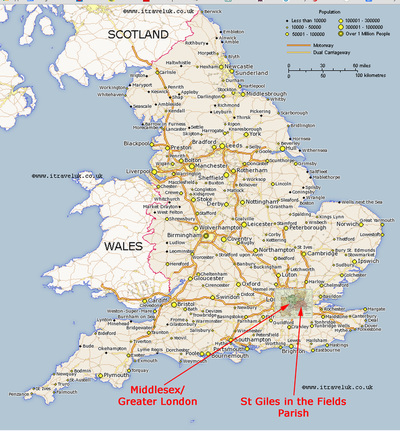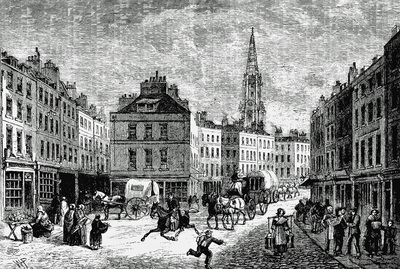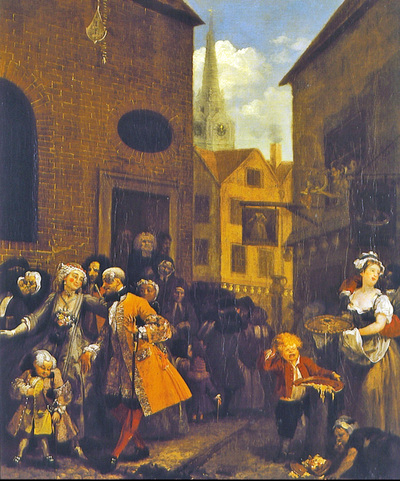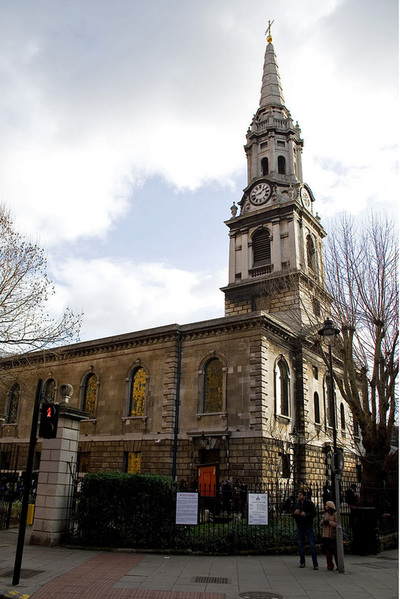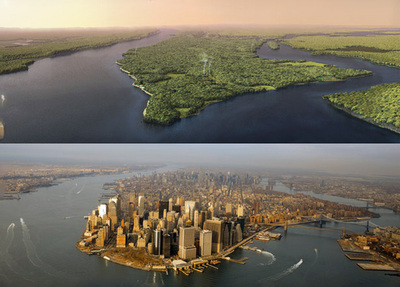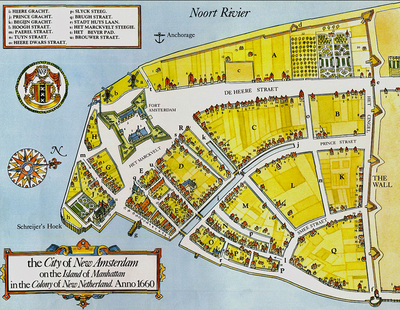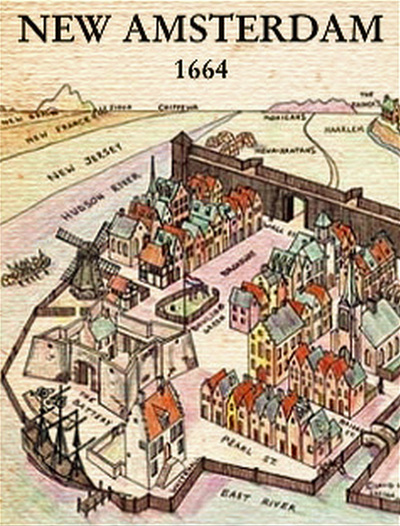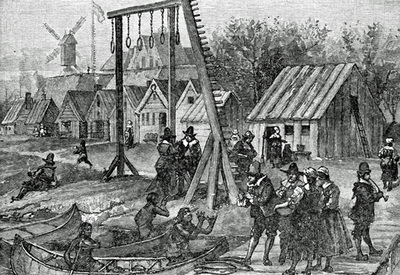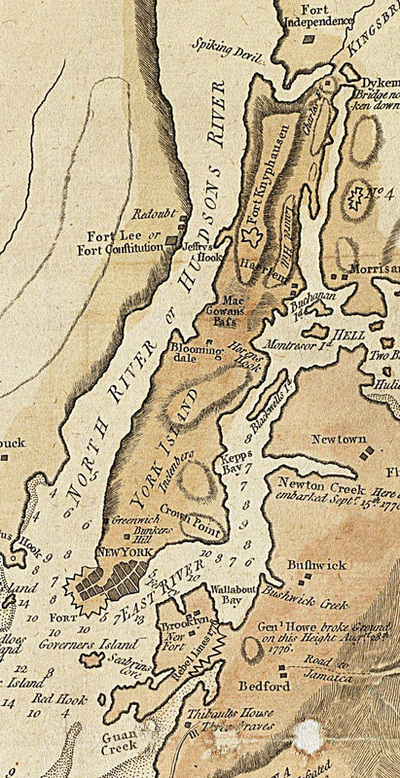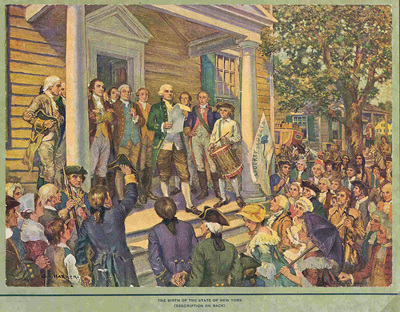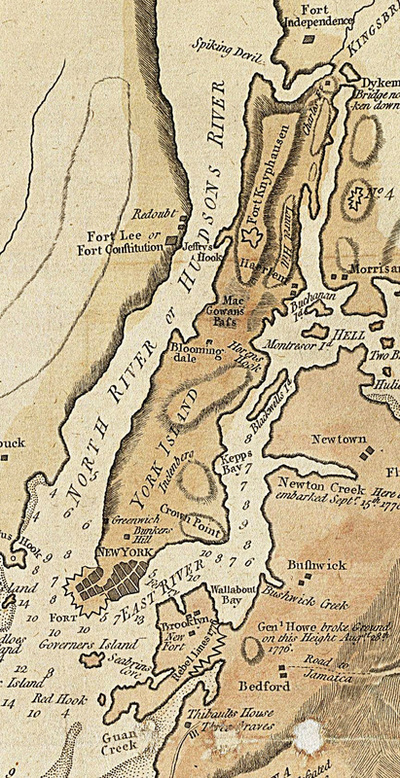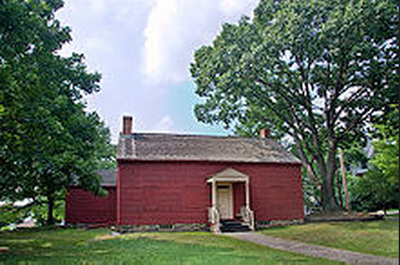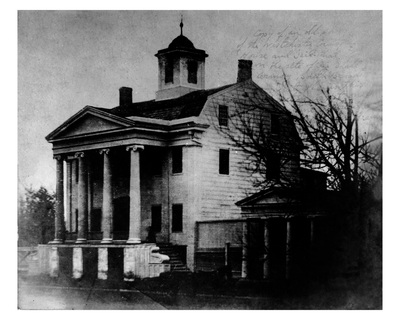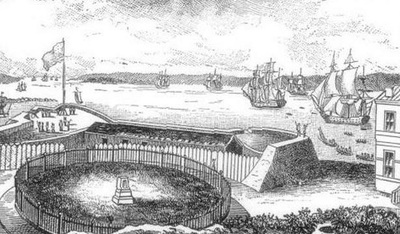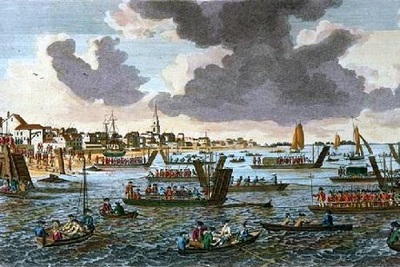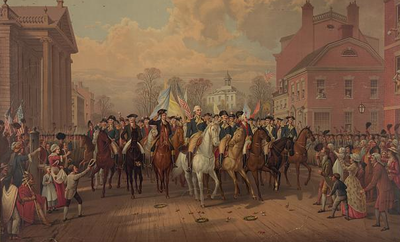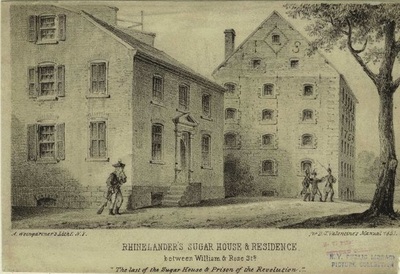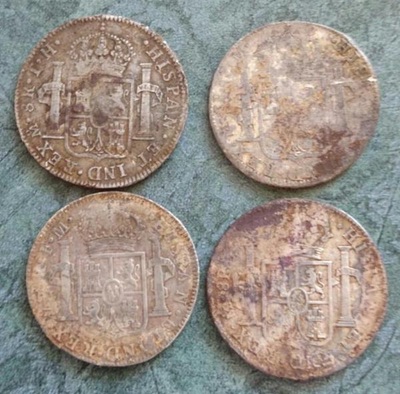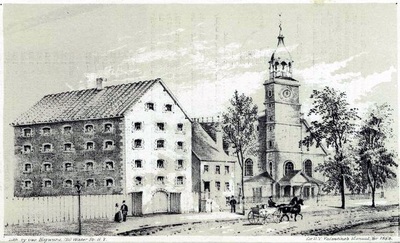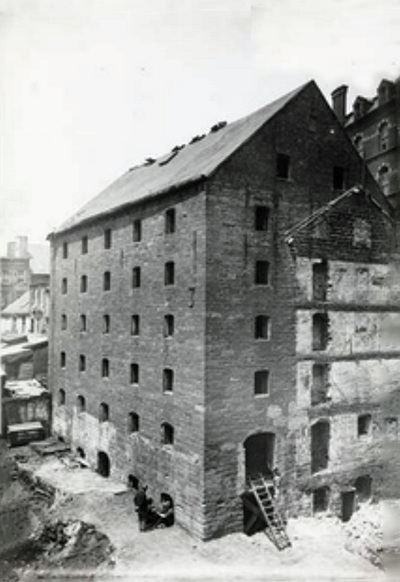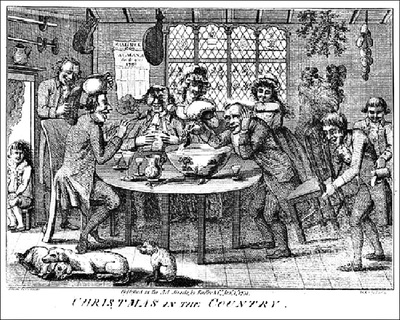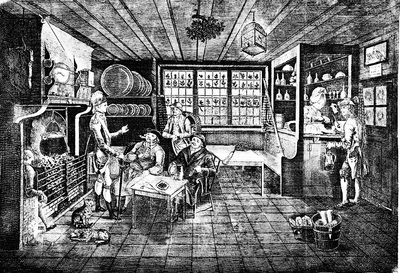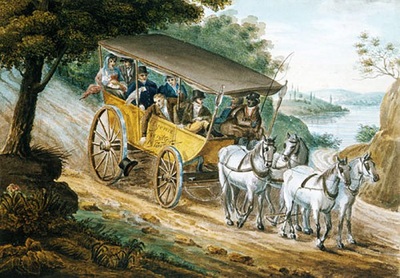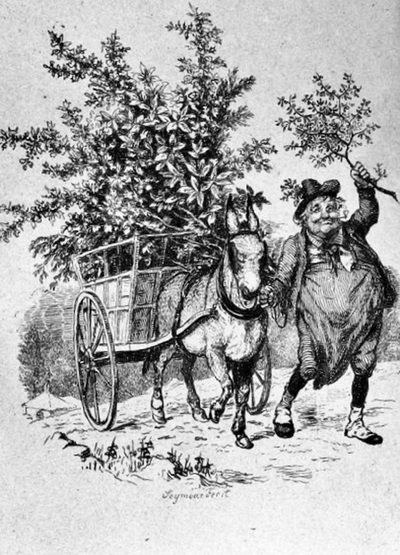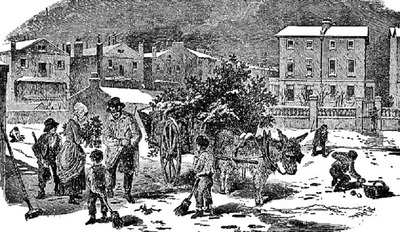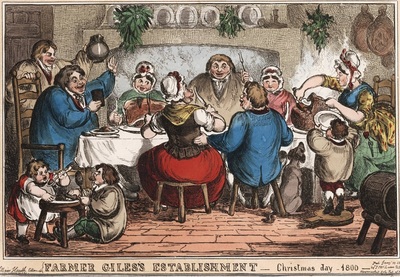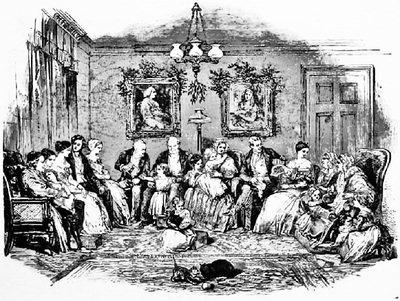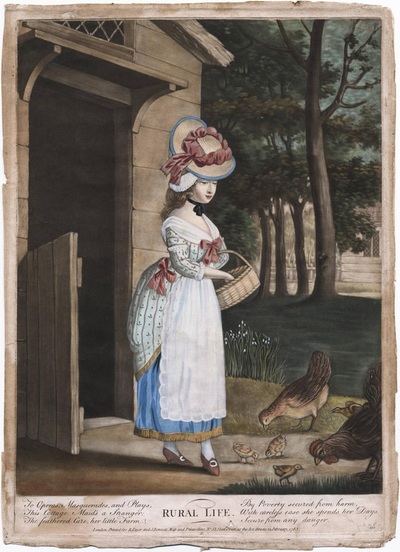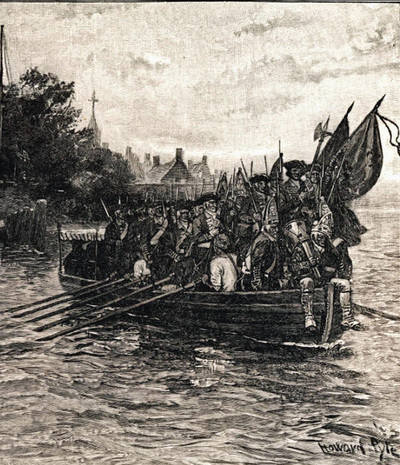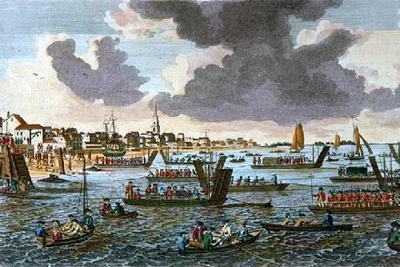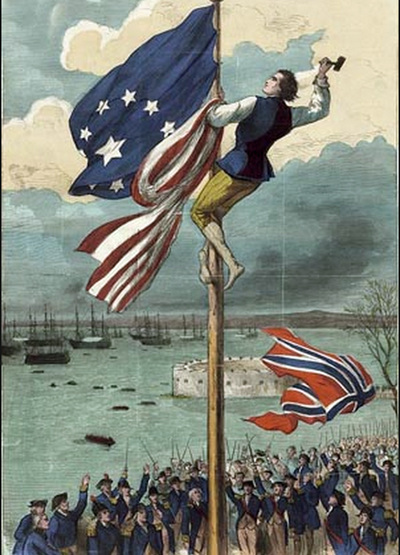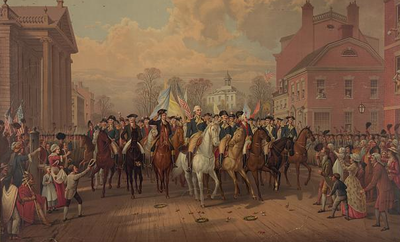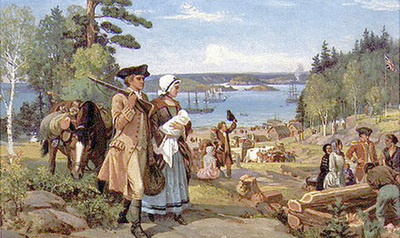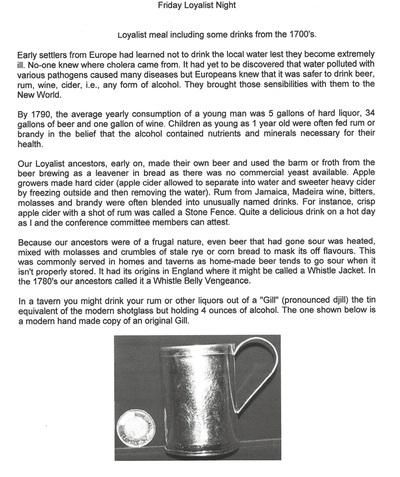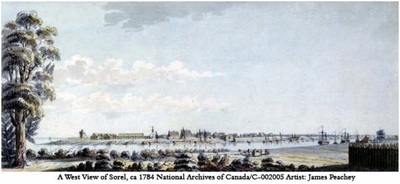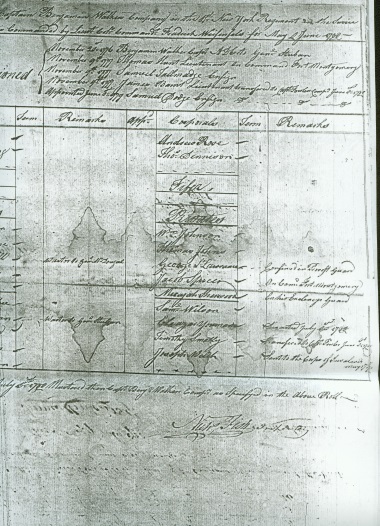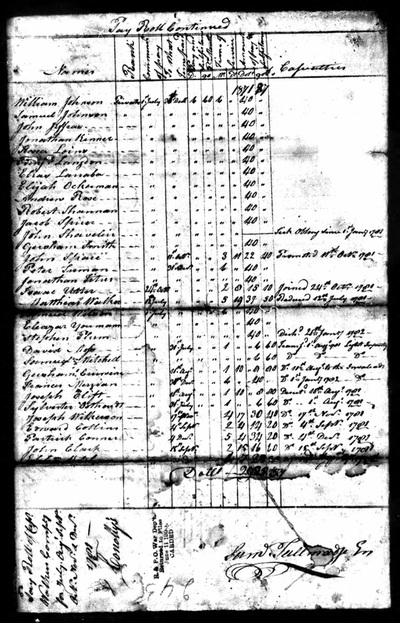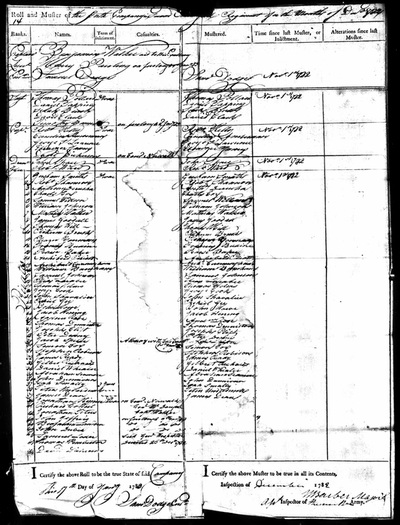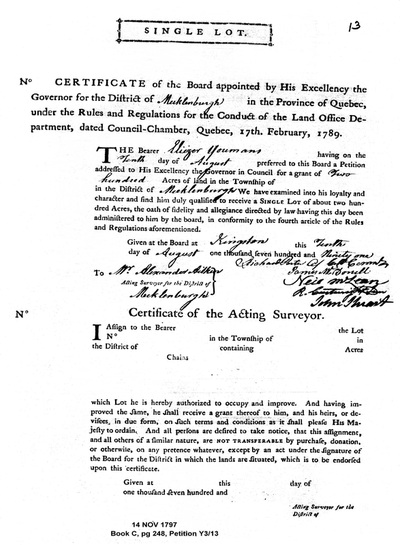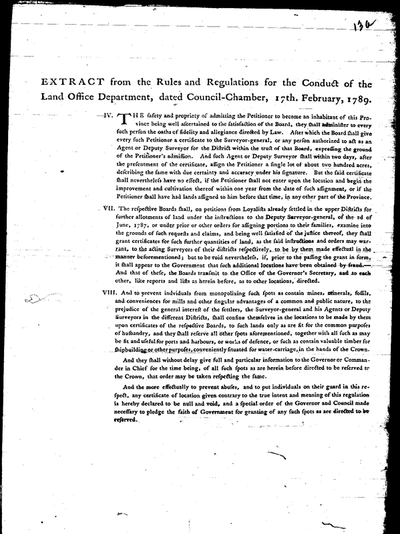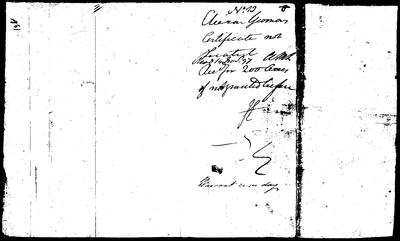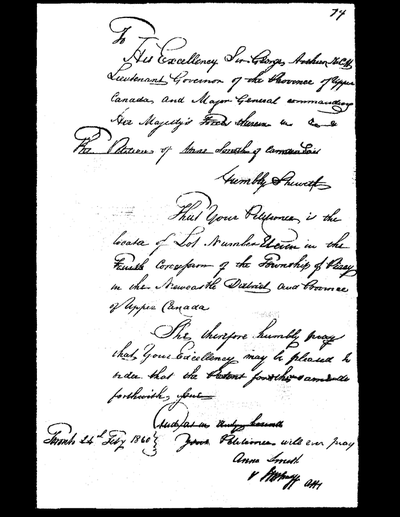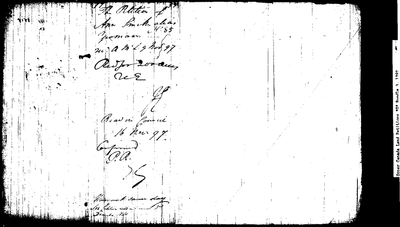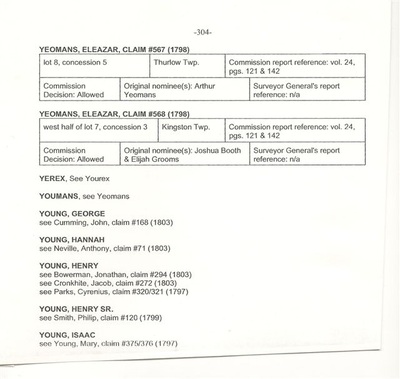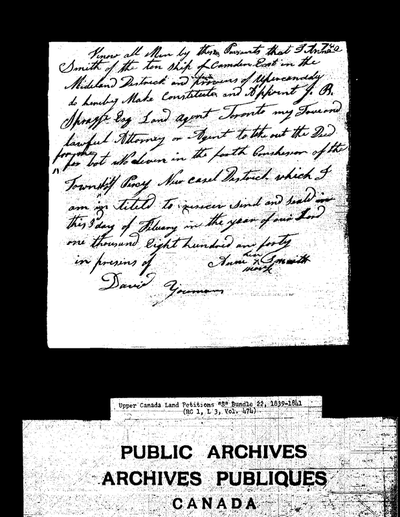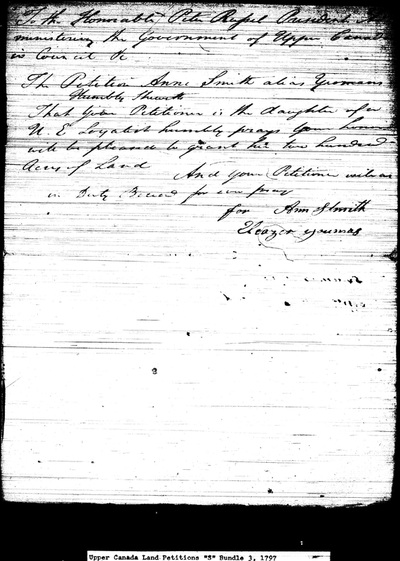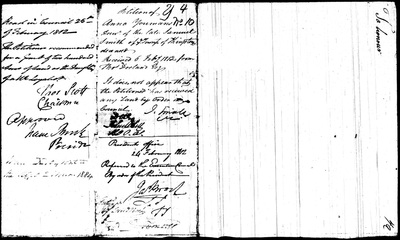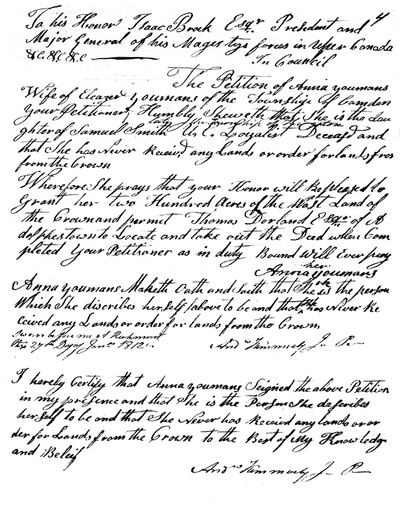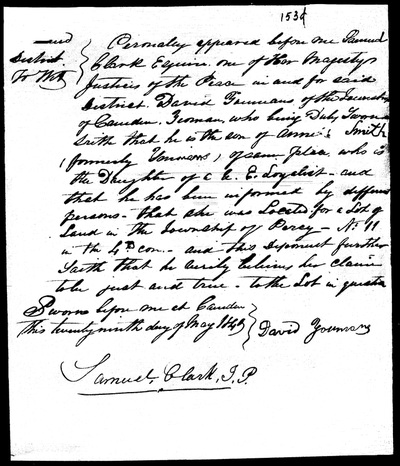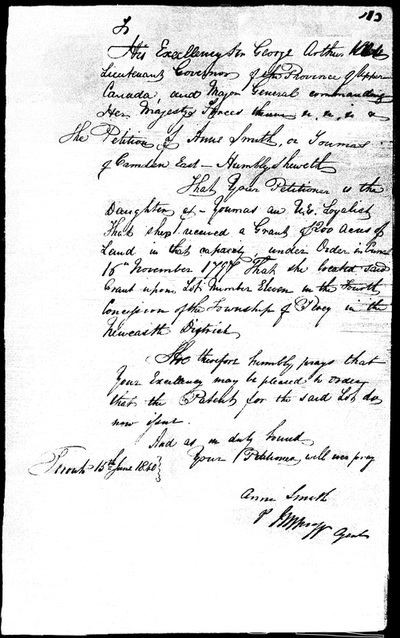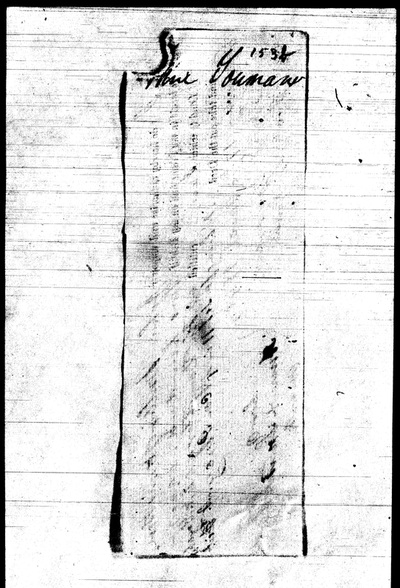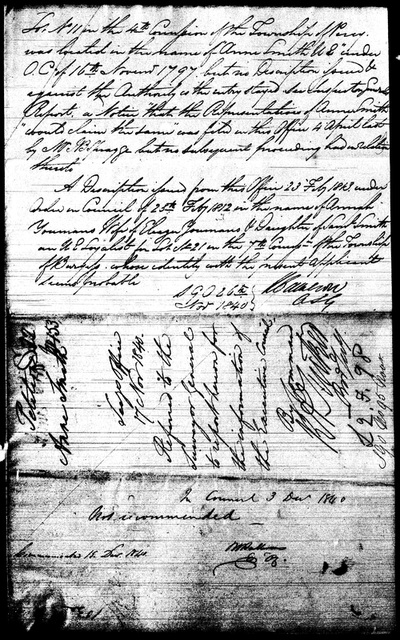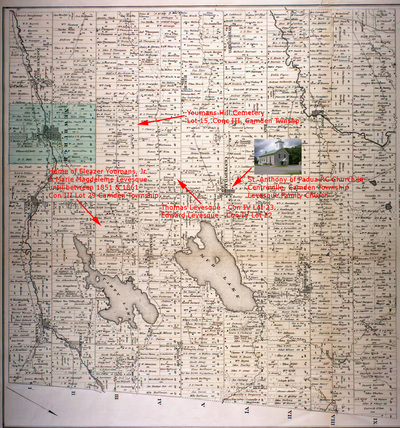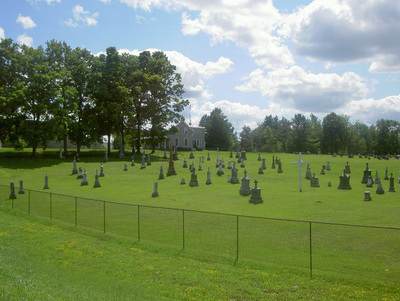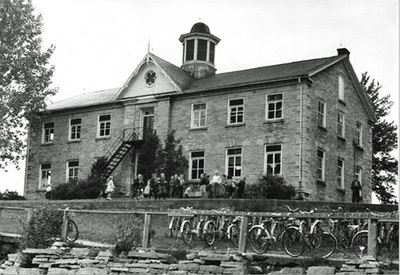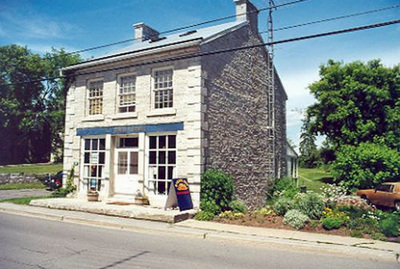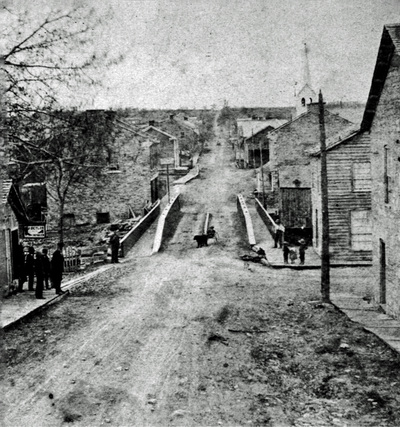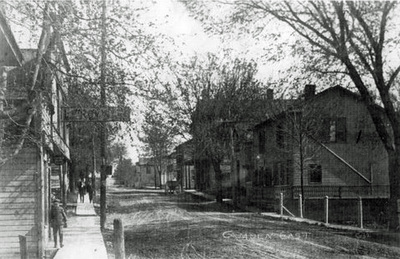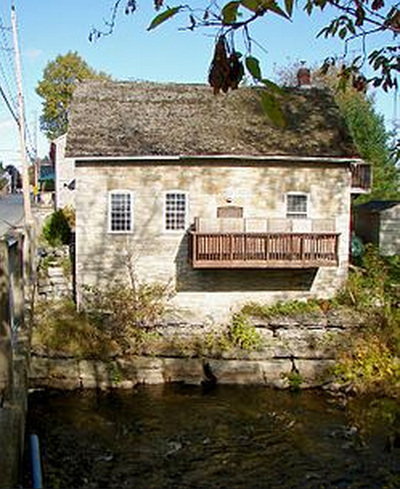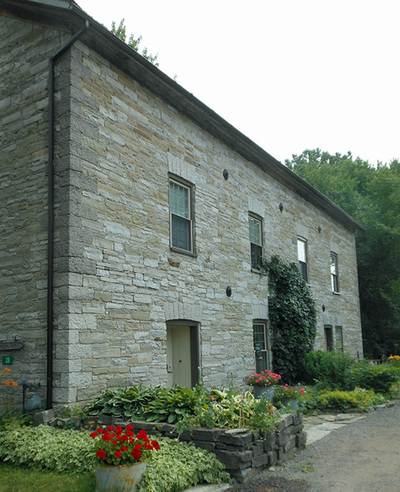Author: Marlene Rodgers, in collaboration with Keith Millard
Introduction:
Yeomans roots go back to Christopher Yeamans from Middlesex England. We are not sure why the Yeomans emigrated from England but below are some of the reasons given.
The English left mainly for economic and religious reasons. The English migration was far larger and more gender-balanced than that of the Dutch, the French, or the Spanish. The explanation for the rapid growth of England's North American colonies lies in the existence of a large "surplus" population. Early seventeenth-century England contained a large number of migrant farmhands and unemployed and under-employed workers. Most English migrants to North America were recruited from the lower working population--farm workers, urban laborers, and artisans--who were suffering from economic distress, including sharply falling wages (which declined by half between 1550 and 1650) and a series of failed harvests.
Religious persecution was a particularly powerful force motivating English colonization. England allowed religious dissidents to migrate to the New World. Some 30,000 English Puritans migrated to New England, while Maryland became a refuge for Roman Catholics and Pennsylvania, southern New Jersey, and Rhode Island, havens for Quakers. The refugees from religious persecution included Baptists, Congregationalists, Presbyterians, and a small number of Catholics, to say nothing of religious minorities from continental Europe, including Huguenots and members of the Dutch and German Reformed churches.
Cursor over photos for captions, click to enlarge:
Introduction:
Yeomans roots go back to Christopher Yeamans from Middlesex England. We are not sure why the Yeomans emigrated from England but below are some of the reasons given.
The English left mainly for economic and religious reasons. The English migration was far larger and more gender-balanced than that of the Dutch, the French, or the Spanish. The explanation for the rapid growth of England's North American colonies lies in the existence of a large "surplus" population. Early seventeenth-century England contained a large number of migrant farmhands and unemployed and under-employed workers. Most English migrants to North America were recruited from the lower working population--farm workers, urban laborers, and artisans--who were suffering from economic distress, including sharply falling wages (which declined by half between 1550 and 1650) and a series of failed harvests.
Religious persecution was a particularly powerful force motivating English colonization. England allowed religious dissidents to migrate to the New World. Some 30,000 English Puritans migrated to New England, while Maryland became a refuge for Roman Catholics and Pennsylvania, southern New Jersey, and Rhode Island, havens for Quakers. The refugees from religious persecution included Baptists, Congregationalists, Presbyterians, and a small number of Catholics, to say nothing of religious minorities from continental Europe, including Huguenots and members of the Dutch and German Reformed churches.
Cursor over photos for captions, click to enlarge:
A little history on Westchester County:
In 1775, Westchester was the richest and most populous county in the colony of New York. It was almost entirely farmland, dotted with small villages at crossroads and on the waterways. Westchester farmers did not riot over taxes as their neighbors in the New England colonies did; British markets and protected prices for agricultural products were of more importance to them.
Once the revolution began, however, Westchester saw more fighting and suffering than any other area in the country. From 1776, when George Washington and his troops retreated through Westchester after their defeat on Long Island, until 1783, when the British were finally expelled, the county was a battleground. For Westchester, the Revolution was truly a civil war, as families were often divided between patriot and loyalist sympathies.
After the Battles of Pelham and White Plains in October 1776, the main American headquarters was at Continental Village, just north of Peekskill. The British headquarters was in New York City. During the entire course of the war, farmers and townspeople throughout Westchester were subjected to raiding, pillaging, and destruction by both British and American irregulars.
The capture of Major John Andre - the British spy - by three Westchester men, was an important factor in America's ultimate victory, for it saved West Point, the fortress protecting the Hudson River, from seizure by the British. Westchester also saw the French troops, commanded by Rochambeau, pass along its roads as they came from Rhode Island to help Gen. Washington's army defeat the British at Yorktown in 1781.
In 1783, after seven years of suffering, Westchester's countryside was devastated and its population depleted. Recovery from the war took time and hard work.
White Plains is a city in Westchester County, New York, just north of New York City. White Plains is located in south-central Westchester, about 11 km east of the Hudson River and 11 km northwest of the Long Island Sound. It is bordered to the north by the town of North Castle, to the north and east by the town/village of Harrison, to the south by the town/village of Scarsdale, and to the west by the town of Greenburgh.
Geography:
York Island was occupied principally on the southern tip (what would now be considered Lower Manhattan) by New York City, on the western tip by Greenwich village, and in the north by the village of Harlem. The sparsely-populated center of the island featured a few low hills, principally Indianburg and Crown Heights. Ferry services connected the island to the surrounding lands, with the primary ferry to the mainland of Westchester County (now the Bronx) crossing the Harlem River at King's Bridge near the northern tip of the island. The island was bordered by two rivers, on the west by the Hudson River and on the east by the East River, which separated the island from Long Island. Kip's Bay was a cove on the eastern shore of the island, extending roughly from present-day 32nd to 38th Streets, and as far west as Second Avenue. The bay no longer exists as such, having been filled in, but in 1776, it provided an excellent place for an amphibious landing: deep water close to the shore, and a large meadow for mustering landed troops. Opposite the bay on Long Island, the wide mouth of Newtown Creek, also surrounded by meadowlands, offered an equally excellent staging area.
Cursor over photos for captions, click to enlarge:
In 1775, Westchester was the richest and most populous county in the colony of New York. It was almost entirely farmland, dotted with small villages at crossroads and on the waterways. Westchester farmers did not riot over taxes as their neighbors in the New England colonies did; British markets and protected prices for agricultural products were of more importance to them.
Once the revolution began, however, Westchester saw more fighting and suffering than any other area in the country. From 1776, when George Washington and his troops retreated through Westchester after their defeat on Long Island, until 1783, when the British were finally expelled, the county was a battleground. For Westchester, the Revolution was truly a civil war, as families were often divided between patriot and loyalist sympathies.
After the Battles of Pelham and White Plains in October 1776, the main American headquarters was at Continental Village, just north of Peekskill. The British headquarters was in New York City. During the entire course of the war, farmers and townspeople throughout Westchester were subjected to raiding, pillaging, and destruction by both British and American irregulars.
The capture of Major John Andre - the British spy - by three Westchester men, was an important factor in America's ultimate victory, for it saved West Point, the fortress protecting the Hudson River, from seizure by the British. Westchester also saw the French troops, commanded by Rochambeau, pass along its roads as they came from Rhode Island to help Gen. Washington's army defeat the British at Yorktown in 1781.
In 1783, after seven years of suffering, Westchester's countryside was devastated and its population depleted. Recovery from the war took time and hard work.
White Plains is a city in Westchester County, New York, just north of New York City. White Plains is located in south-central Westchester, about 11 km east of the Hudson River and 11 km northwest of the Long Island Sound. It is bordered to the north by the town of North Castle, to the north and east by the town/village of Harrison, to the south by the town/village of Scarsdale, and to the west by the town of Greenburgh.
Geography:
York Island was occupied principally on the southern tip (what would now be considered Lower Manhattan) by New York City, on the western tip by Greenwich village, and in the north by the village of Harlem. The sparsely-populated center of the island featured a few low hills, principally Indianburg and Crown Heights. Ferry services connected the island to the surrounding lands, with the primary ferry to the mainland of Westchester County (now the Bronx) crossing the Harlem River at King's Bridge near the northern tip of the island. The island was bordered by two rivers, on the west by the Hudson River and on the east by the East River, which separated the island from Long Island. Kip's Bay was a cove on the eastern shore of the island, extending roughly from present-day 32nd to 38th Streets, and as far west as Second Avenue. The bay no longer exists as such, having been filled in, but in 1776, it provided an excellent place for an amphibious landing: deep water close to the shore, and a large meadow for mustering landed troops. Opposite the bay on Long Island, the wide mouth of Newtown Creek, also surrounded by meadowlands, offered an equally excellent staging area.
Cursor over photos for captions, click to enlarge:
Background:
According to well-documented sources, Christopher Youmans, b. ca. 1638 in England, immigrated to America in 1656, settling on Long Island New York Province, near Madman's Neck. He m. Hannah (---) about 1662. Based on an inheritance from his brother William Yeamans, England is identified as his homeland. Based on his brother's will, the surname was originally "Yeamans". The most likely reason for the spelling change is that Christopher resided in a Dutch County and this is how the Dutch spell the English name Yeamans or Yeomans. Known Children of Christopher Youmans (Yeamans): Moses, Christopher, Solomon, Hannah, John, Thomas, Sarah, Mary and William. Christopher moved to Rye, Westchester Co., New York Province in ca. 1720.
Christopher’s descendants prospered, and continued to move up the Hudson between New York Province and Connecticut. Stories of the Youmans/Yeomans families in Dutchess County, Albany County, and many other New York counties are numerous. They participated in all the major wars, settled the land, and were some of the early pioneers moving ever westward.
Some notables include Edward Livingston Youmans, scientist, born in Coeymans, New York, 3 June, 1821; died in New York city, 18 January, 1887, and the Composer Vincent Millie Youmans, who was born in New York City on September 27, 1898. There is also the most probable link to the Yeamans family and to characters, such as Sir John Yeamans born about 1605 in Bristol, England, died about 1676 in Barbados (West Indies). He was the Governor of the British Province of Carolina. He is descended from a famous family line of Yeamans or Yeomans of Bristol, England. Sir Robert Yeamans (a brother or cousin) was a High Sheriff and Mayor of Bristol.
Grant Samuel Youmans wrote and researched the Youmans/Yeomans/Yeamans families extensively from the 1940s until his death in the early 1960s. He claimed that he had material linking all the early (1650-1675) Youmans pioneering families that settled in Virginia, Barbados, Massachusetts, and New York to each other and back to England to a common ancestor. Unfortunately, he died before he was able to complete his next book, and his extensive research materials, once held by the National Genealogy Society, have been lost or are being held in the hands of a private individual.
For this and many other reasons, Y-DNA research may hold the greatest promise for proving what Grant Samuel Youmans spent a good bit of time and a small fortune attempting to prove.
Source: Greener, J. H. Yeomans- Youmans Family Brooklyn, New York, 1927. The micro film, which was purchased by Michael Stephen Yeomans, was part of a larger manuscript that was never published. Tom Yeomans transcribed the material and loaded it into a genealogy tree system. The first three Youmans Generations are shown in the pdf file below.
According to well-documented sources, Christopher Youmans, b. ca. 1638 in England, immigrated to America in 1656, settling on Long Island New York Province, near Madman's Neck. He m. Hannah (---) about 1662. Based on an inheritance from his brother William Yeamans, England is identified as his homeland. Based on his brother's will, the surname was originally "Yeamans". The most likely reason for the spelling change is that Christopher resided in a Dutch County and this is how the Dutch spell the English name Yeamans or Yeomans. Known Children of Christopher Youmans (Yeamans): Moses, Christopher, Solomon, Hannah, John, Thomas, Sarah, Mary and William. Christopher moved to Rye, Westchester Co., New York Province in ca. 1720.
Christopher’s descendants prospered, and continued to move up the Hudson between New York Province and Connecticut. Stories of the Youmans/Yeomans families in Dutchess County, Albany County, and many other New York counties are numerous. They participated in all the major wars, settled the land, and were some of the early pioneers moving ever westward.
Some notables include Edward Livingston Youmans, scientist, born in Coeymans, New York, 3 June, 1821; died in New York city, 18 January, 1887, and the Composer Vincent Millie Youmans, who was born in New York City on September 27, 1898. There is also the most probable link to the Yeamans family and to characters, such as Sir John Yeamans born about 1605 in Bristol, England, died about 1676 in Barbados (West Indies). He was the Governor of the British Province of Carolina. He is descended from a famous family line of Yeamans or Yeomans of Bristol, England. Sir Robert Yeamans (a brother or cousin) was a High Sheriff and Mayor of Bristol.
Grant Samuel Youmans wrote and researched the Youmans/Yeomans/Yeamans families extensively from the 1940s until his death in the early 1960s. He claimed that he had material linking all the early (1650-1675) Youmans pioneering families that settled in Virginia, Barbados, Massachusetts, and New York to each other and back to England to a common ancestor. Unfortunately, he died before he was able to complete his next book, and his extensive research materials, once held by the National Genealogy Society, have been lost or are being held in the hands of a private individual.
For this and many other reasons, Y-DNA research may hold the greatest promise for proving what Grant Samuel Youmans spent a good bit of time and a small fortune attempting to prove.
Source: Greener, J. H. Yeomans- Youmans Family Brooklyn, New York, 1927. The micro film, which was purchased by Michael Stephen Yeomans, was part of a larger manuscript that was never published. Tom Yeomans transcribed the material and loaded it into a genealogy tree system. The first three Youmans Generations are shown in the pdf file below.
A number of sketches, paintings, etc. depicting life in the late 1700s are shown below.
Cursor over photos for captions, click to enlarge:
Cursor over photos for captions, click to enlarge:
Early History of Manhattan:
At the time of the Dutch settlement of Manhattan in the early 17th century, the region had been used as farmland by the Weckquaeskeck tribe, members of the Mohican nation and was called "Quarropas". To early traders it was known as "the White Plains", either from the groves of white balsam which are said to have covered it, or from the heavy mist that local tradition suggests hovered over the swamplands near the Bronx River. The first non-native settlement came in November 1683, when a party of Connecticut Puritans moved westward from an earlier settlement in Rye and bought about 4,400 acres 18 km2, presumably from the Weckquaeskeck. However, John Richbell of Mamaroneck claimed to have earlier title to much of the territory through his purchase of a far larger plot extending 32 km inland, perhaps from a different tribe.
The matter wasn't settled until 1721, when a Royal Patent for White Plains was granted by King George II.
In 1758, White Plains became the seat of Westchester County when the colonial government for the county left West Chester, which was located in what is now the northern part of the borough of the Bronx, in New York City. The unincorporated village remained part of the Town of Rye until 1788, when the Town of White Plains was created.
On July 9, 1776, a copy of the Declaration of Independence was delivered to the New York Provincial Congress, which was meeting in the county courthouse. The delegates quickly adopted a resolution approving the Declaration, thus declaring both the colony's independence and the formation of the State of New York. The Declaration itself was first publicly read from the steps of the courthouse on July 11.
During September and October 1776, troops led by George Washington took up positions in the hills of the village, hotly pursued by the British under General Sir William Howe, who attacked on October 28. The Battle of White Plains took place primarily on Chatterton Hill, (later known as "Battle Hill," and located just west of what was then a swamp but is now the downtown area) and the Bronx River. Howe's force of 4,000–6,000 British and Hessian soldiers required three attacks before the Continentals, numbering about 1,600 under the command of Generals Alexander McDougall and Israel Putnam, retreated, joining Washington's main force, which did not take part in the battle. Howe's forces had suffered 250 casualties, a severe loss, and he made no attempt to pursue the Continentals, whose casualties were about 125 dead and wounded. Three days after the battle Washington withdrew north of the village, this was then occupied by Howe's forces. But after several inconclusive skirmishes over the next week Howe withdrew on November 5, leaving White Plains to the Continentals. Ironically, one of Washington's subordinates, Major John Austin, who was probably drunk after having celebrated the enemy's withdrawal, re-entered the village with his detachment and proceeded to burn it down. Although he was court-martialed and convicted for this action, he escaped punishment.
The first United States Census, conducted in 1790, listed the White Plains population at 505, of whom 46 were slaves.
Youmans Ancestry - Family Tree record:
Click on Download File to open in a browser window:
At the time of the Dutch settlement of Manhattan in the early 17th century, the region had been used as farmland by the Weckquaeskeck tribe, members of the Mohican nation and was called "Quarropas". To early traders it was known as "the White Plains", either from the groves of white balsam which are said to have covered it, or from the heavy mist that local tradition suggests hovered over the swamplands near the Bronx River. The first non-native settlement came in November 1683, when a party of Connecticut Puritans moved westward from an earlier settlement in Rye and bought about 4,400 acres 18 km2, presumably from the Weckquaeskeck. However, John Richbell of Mamaroneck claimed to have earlier title to much of the territory through his purchase of a far larger plot extending 32 km inland, perhaps from a different tribe.
The matter wasn't settled until 1721, when a Royal Patent for White Plains was granted by King George II.
In 1758, White Plains became the seat of Westchester County when the colonial government for the county left West Chester, which was located in what is now the northern part of the borough of the Bronx, in New York City. The unincorporated village remained part of the Town of Rye until 1788, when the Town of White Plains was created.
On July 9, 1776, a copy of the Declaration of Independence was delivered to the New York Provincial Congress, which was meeting in the county courthouse. The delegates quickly adopted a resolution approving the Declaration, thus declaring both the colony's independence and the formation of the State of New York. The Declaration itself was first publicly read from the steps of the courthouse on July 11.
During September and October 1776, troops led by George Washington took up positions in the hills of the village, hotly pursued by the British under General Sir William Howe, who attacked on October 28. The Battle of White Plains took place primarily on Chatterton Hill, (later known as "Battle Hill," and located just west of what was then a swamp but is now the downtown area) and the Bronx River. Howe's force of 4,000–6,000 British and Hessian soldiers required three attacks before the Continentals, numbering about 1,600 under the command of Generals Alexander McDougall and Israel Putnam, retreated, joining Washington's main force, which did not take part in the battle. Howe's forces had suffered 250 casualties, a severe loss, and he made no attempt to pursue the Continentals, whose casualties were about 125 dead and wounded. Three days after the battle Washington withdrew north of the village, this was then occupied by Howe's forces. But after several inconclusive skirmishes over the next week Howe withdrew on November 5, leaving White Plains to the Continentals. Ironically, one of Washington's subordinates, Major John Austin, who was probably drunk after having celebrated the enemy's withdrawal, re-entered the village with his detachment and proceeded to burn it down. Although he was court-martialed and convicted for this action, he escaped punishment.
The first United States Census, conducted in 1790, listed the White Plains population at 505, of whom 46 were slaves.
Youmans Ancestry - Family Tree record:
Click on Download File to open in a browser window:
| youmans_ancestry_-_family_tree_record.pdf |
4th Generation:
Arthur Youmans was born about 1729 in White Plains, Westchester Co., New York Province the eldest child of Eleazer & Mary Youmans and died on 27 Apr 1800 in Kingston, Frontenac Co., Upper Canada. Arthur married Sarah Orser Oakley about 1754 in Hempstead, Queens Co., New York Province. Sarah was born about 1731 and in died in Warwick, Orange County, New York Province.
In the Sons and Daughters of American Loyalists by William D. Reid pg 349 he list Arthur Youmans as a Loyalist, also the Executive Council List RG 1 L7 Vol 52A, lists Arthur as well.
Taken from story written by Jean Norry on Arthur Youmans:
Arthur Youmans (who always spelled his name Yeomans) was in Beverley Robinson's Regiment, the Loyal Americans, and based in New York City for most of the war. Arthur and his brother James joined on October 11th of 1777... as indicated by the muster rolls. This means he found a place for his family to live on Long Island and then he went off to join the army. He was on guard duty in various places around New York for those 5 years between 1777 and 1783. Arthur had been a moderately well to do land owner in Smith's Clove in Orange County before the war. His father Eleazer had been a successful millwright in Westchester County in the 1760s, at White Plains and at Peekskill. Arthur would have known many of the Loyalist refugees and the Loyal American soldiers from Westchester County. On August 22nd of 1783 the Loyal American muster roll has this notation for Arthur, "gone into the country for his family". They may have left on the last British ship out of New York City. The evacuation took place that fall, the port of New York was handed over to the Americans on Sept. 15th of that year, so they probably left New York on one of the last troop ships leaving in September. No doubt they went directly to Quebec City and then in a river boat up to Sorel Island.
Cursor over photos for caption, click on to enlarge:
Arthur Youmans was born about 1729 in White Plains, Westchester Co., New York Province the eldest child of Eleazer & Mary Youmans and died on 27 Apr 1800 in Kingston, Frontenac Co., Upper Canada. Arthur married Sarah Orser Oakley about 1754 in Hempstead, Queens Co., New York Province. Sarah was born about 1731 and in died in Warwick, Orange County, New York Province.
In the Sons and Daughters of American Loyalists by William D. Reid pg 349 he list Arthur Youmans as a Loyalist, also the Executive Council List RG 1 L7 Vol 52A, lists Arthur as well.
Taken from story written by Jean Norry on Arthur Youmans:
Arthur Youmans (who always spelled his name Yeomans) was in Beverley Robinson's Regiment, the Loyal Americans, and based in New York City for most of the war. Arthur and his brother James joined on October 11th of 1777... as indicated by the muster rolls. This means he found a place for his family to live on Long Island and then he went off to join the army. He was on guard duty in various places around New York for those 5 years between 1777 and 1783. Arthur had been a moderately well to do land owner in Smith's Clove in Orange County before the war. His father Eleazer had been a successful millwright in Westchester County in the 1760s, at White Plains and at Peekskill. Arthur would have known many of the Loyalist refugees and the Loyal American soldiers from Westchester County. On August 22nd of 1783 the Loyal American muster roll has this notation for Arthur, "gone into the country for his family". They may have left on the last British ship out of New York City. The evacuation took place that fall, the port of New York was handed over to the Americans on Sept. 15th of that year, so they probably left New York on one of the last troop ships leaving in September. No doubt they went directly to Quebec City and then in a river boat up to Sorel Island.
Cursor over photos for caption, click on to enlarge:
United Empire Loyalist - Life in Upper Canada:
Arthur was spotted in Sorel that winter with his son David, which must means Arthur most likely didn't have time to receive any land in Nova Scotia or New Brunswick. Most of the Loyal American Regiment soldiers settled along the St. John River.
Arthur must have been partly blind, so David, his teenaged son was taking Arthur's arm and walking with him in Sorel that winter of 1783. This son David Youmans, born in 1771, was ordained as one of the first Canadian preachers for the Methodist church in Upper Canada by 1813. Arthur's signature on a legal document in New York City in 1791 was written as though he couldn't see what he was doing.
This little family of Arthur Youmans and his wife Sarah must have stayed in Montreal for about four years. They had another son James, born there in 1787. Their son Arthur (1774- 1858) may have gone to school in Montreal and the oldest son Eleazer (1764 -1844) probably worked on the docks at Lachine. That story turns up in a Dowling family recollection told many years later by a grandson. And it is possible that David learned to be a blacksmith at Lachine, as when David was a Methodist preacher and circuit rider in Upper Canada, his occupation was written down as a blacksmith.
They arrived in Kingston in 1787 to apply for Loyalist land. As we all know, most of the Loyalists had been granted land by lot four years earlier in 1784. Arthur and his son David were awarded 200 acres each on the 5th Concession of Thurlow Twp., in Hastings County.
It is doubted if Arthur, the father, ever took his family to Thurlow Twp. He could have lived with his oldest son Eleazer in Kingston. By 1790 he had decided to go back to New York to appear at a court case involving a farm he had sold in Smith's Clove before the war, but for which he hadn't paid off the mortgage. So, Arthur and his wife Sarah left Canada.
It looks as though they rearranged their family so that the baby James would stay with Eleazer in Kingston and David, who had married Sally by now, would look after Sarah and Arthur in Picton. In the meantime David had acquired another farm on the high shore of Prince Edward County in Hallowell Twp., at lot 19, overlooking the Bay of Quinte.
There was another daughter Jemima Youmans who married William Yerex in Kingston on November 29th, 1789. William's father Isaac Yerex was a friend of Arthur Youmans and I can imagine they arranged this marriage of their children before going back to New York. Larry Turner in his book' about the Adolphustown and Kingston Loyalists, "Voyage of a Different Kind", wrote that Isaac Yerex went back to New York as well.
Arthur was spotted in Sorel that winter with his son David, which must means Arthur most likely didn't have time to receive any land in Nova Scotia or New Brunswick. Most of the Loyal American Regiment soldiers settled along the St. John River.
Arthur must have been partly blind, so David, his teenaged son was taking Arthur's arm and walking with him in Sorel that winter of 1783. This son David Youmans, born in 1771, was ordained as one of the first Canadian preachers for the Methodist church in Upper Canada by 1813. Arthur's signature on a legal document in New York City in 1791 was written as though he couldn't see what he was doing.
This little family of Arthur Youmans and his wife Sarah must have stayed in Montreal for about four years. They had another son James, born there in 1787. Their son Arthur (1774- 1858) may have gone to school in Montreal and the oldest son Eleazer (1764 -1844) probably worked on the docks at Lachine. That story turns up in a Dowling family recollection told many years later by a grandson. And it is possible that David learned to be a blacksmith at Lachine, as when David was a Methodist preacher and circuit rider in Upper Canada, his occupation was written down as a blacksmith.
They arrived in Kingston in 1787 to apply for Loyalist land. As we all know, most of the Loyalists had been granted land by lot four years earlier in 1784. Arthur and his son David were awarded 200 acres each on the 5th Concession of Thurlow Twp., in Hastings County.
It is doubted if Arthur, the father, ever took his family to Thurlow Twp. He could have lived with his oldest son Eleazer in Kingston. By 1790 he had decided to go back to New York to appear at a court case involving a farm he had sold in Smith's Clove before the war, but for which he hadn't paid off the mortgage. So, Arthur and his wife Sarah left Canada.
It looks as though they rearranged their family so that the baby James would stay with Eleazer in Kingston and David, who had married Sally by now, would look after Sarah and Arthur in Picton. In the meantime David had acquired another farm on the high shore of Prince Edward County in Hallowell Twp., at lot 19, overlooking the Bay of Quinte.
There was another daughter Jemima Youmans who married William Yerex in Kingston on November 29th, 1789. William's father Isaac Yerex was a friend of Arthur Youmans and I can imagine they arranged this marriage of their children before going back to New York. Larry Turner in his book' about the Adolphustown and Kingston Loyalists, "Voyage of a Different Kind", wrote that Isaac Yerex went back to New York as well.
Arthur Youmans - Descendants:
Arthur Youmans and Sarah Oakley were married about 1764 in Westchester Co., NY. Sarah Oakley was born about 1731 in Westchester, NY. They moved to Orange Co., New York and transferred land in that area in 1773. Of Westchester Co., New York at marriage.
There are some descendants that used Oakley as given names. See Samuel Oakley Rodgers, Oakley Dennis Rodgers & Oakley Rodgers. Seems that there should have been some use of Oakley as a given name before these people, as the first use of Oakley was by a great granddaughter of Sarah Oakley.
Arthur Youmans and Sarah Oakley had the following children:
i. ELEAZER YOUMANS, born 1764, Oneida Co., New York Province; married ANNA SMITH, bef 1795, Ontario; died 20 Dec 1844, Camden East Twp., Lennox/Addington Co., Canada West.
ii. Jemima Youmans, born 25 Jul 1769, Smith's Cove, Westchester Co., New York Province; married William Yerex, Nov 1789, Picton, Hallowell Twp., Prince Edward Co., Upper Canada died 1812, Hallowell, Hallowell Twp., Prince Edward Co., Upper Canada.
iii. Richard Youmans was born about 1770 in Smith Cove, Orange Co., New York Province
iv. Rev. David Youmans, born about 1771; died 14 Feb 1856, Markham, Markham Twp., York Co., Canada West.
v. Arthur Youmans, born 17 Mar 1774, Smith's Cove, Westchester Co., New York Province; married Hannah Wright, 18 Jul 1797, Hallowell, Hallowell Twp., Prince Edward Co., Upper Canada died 28 Aug 1858, Picton, Hallowell Twp., Prince Edward Co., Canada West
vi. Sarah Youmans, born 15 Jun 1777, Long Island, NY; married Andrew Huffnail, abt 1795; died 17 May 1860 in Fredericksburg Twp., Lennox/Addington Co., Canada West.
vii. James Youmans was born about 1779 in Montreal, Quebec Lower Canada. He owned Received land as son of a Loyalist. on 31 May 1808 in Upper Canada. James died about 1847 at the age of 68.
Note: At the present time, our Geni Family Tree shows 843 descendants for Arthur Youmans. The following descendants fan chart shows 6 generations (each generation is shown in a different colour).
Click on Download File to open the pdf fan chart, click on + or - at bottom to increase or decrease the size, Back to return:
Arthur Youmans and Sarah Oakley were married about 1764 in Westchester Co., NY. Sarah Oakley was born about 1731 in Westchester, NY. They moved to Orange Co., New York and transferred land in that area in 1773. Of Westchester Co., New York at marriage.
There are some descendants that used Oakley as given names. See Samuel Oakley Rodgers, Oakley Dennis Rodgers & Oakley Rodgers. Seems that there should have been some use of Oakley as a given name before these people, as the first use of Oakley was by a great granddaughter of Sarah Oakley.
Arthur Youmans and Sarah Oakley had the following children:
i. ELEAZER YOUMANS, born 1764, Oneida Co., New York Province; married ANNA SMITH, bef 1795, Ontario; died 20 Dec 1844, Camden East Twp., Lennox/Addington Co., Canada West.
ii. Jemima Youmans, born 25 Jul 1769, Smith's Cove, Westchester Co., New York Province; married William Yerex, Nov 1789, Picton, Hallowell Twp., Prince Edward Co., Upper Canada died 1812, Hallowell, Hallowell Twp., Prince Edward Co., Upper Canada.
iii. Richard Youmans was born about 1770 in Smith Cove, Orange Co., New York Province
iv. Rev. David Youmans, born about 1771; died 14 Feb 1856, Markham, Markham Twp., York Co., Canada West.
v. Arthur Youmans, born 17 Mar 1774, Smith's Cove, Westchester Co., New York Province; married Hannah Wright, 18 Jul 1797, Hallowell, Hallowell Twp., Prince Edward Co., Upper Canada died 28 Aug 1858, Picton, Hallowell Twp., Prince Edward Co., Canada West
vi. Sarah Youmans, born 15 Jun 1777, Long Island, NY; married Andrew Huffnail, abt 1795; died 17 May 1860 in Fredericksburg Twp., Lennox/Addington Co., Canada West.
vii. James Youmans was born about 1779 in Montreal, Quebec Lower Canada. He owned Received land as son of a Loyalist. on 31 May 1808 in Upper Canada. James died about 1847 at the age of 68.
Note: At the present time, our Geni Family Tree shows 843 descendants for Arthur Youmans. The following descendants fan chart shows 6 generations (each generation is shown in a different colour).
Click on Download File to open the pdf fan chart, click on + or - at bottom to increase or decrease the size, Back to return:
| 1729_-_arthur_youmans_-_6_gens_descendants_fan_chart.pdf |
5th Generation:
Eleazer was born circa 1764 in Oneida Co., New York Province, which was formed in 1798 from Herkimer Co. which had been formed in 1791 from Montgomery Co. Thus, Oneida Co. was part of Montgomery Co. New York Province when Eleazer was born.
The below War Record information was taken from research done by a Youmans cousin Richard MacLeod.
Click on Muster Roll photos to enlarge, cursor over for caption:
Eleazer was born circa 1764 in Oneida Co., New York Province, which was formed in 1798 from Herkimer Co. which had been formed in 1791 from Montgomery Co. Thus, Oneida Co. was part of Montgomery Co. New York Province when Eleazer was born.
The below War Record information was taken from research done by a Youmans cousin Richard MacLeod.
Click on Muster Roll photos to enlarge, cursor over for caption:
Click on Download File to Open the war record:
| eleazer_youmans_-_revolutionary_war_record.pdf |
Next we find Eleazer in Lower Canada after 1783... His name is sometimes spelled Yeomans, and is used as often as Youmans in his descendants. It is possible that Youmans is a Dutch corruption of Yeomans, as there is a strong Dutch influence both in the Yeomans family and New York State from where they arrived.
It seems that Eleazer joined his family spending about 4 years in Montreal, the little family relocated to Upper Canada settling in the Kingston area sometime about 1789/90. It is here that Eleazer meets and marries his wife Anna Smith about 1790. Anna was the daughter of another Loyalists Samuel Smith UEL of Kingston, she was born about 1771 in Kings Co., New York Province and died December 25, 1851 in Camden Twp., Lennox/Addington Co., Canada West.
It is here that we find that a certificate dated 18 Oct 1788 at Kingston was granted to Eleazer and it states that, "The bearer here of Eleazer Yeomans being entitled to one hundred Acres of Land has drawn one-half of Lot No. 15 consisting of 100 Acres in the 1st concession 1st Township below Pittsburg. The same being granted upon condition that he does settle & improve thereon within twelve months of the date herein otherwise this Certificate is Void." (Note:This was apparently a standard clause, even for loyalists.)
A certificate that states that Eleazer Youmans on 10 Aug 1791 submitted a petition requesting 200 acres in the District of Mecklenburgh. His request was granted in Kingston the same day, conditioned upon him improving & cultivating the land within 12 months. Regardless of the certificate, Eleazer apparently did not receive any land at that time. The third page of this "petition" states "Certificate not Located" and Recd (Recommended) for 200 acres if not granted before." It's dated 14 Nov 97, the date in the index.
Eleazer also petitioned twice for land under his wife Anna Smith, which was granted. Below are the petitions of Eleazer Youmans & Anna Smith
Click on photos to enlarge, cursor over for caption:
It seems that Eleazer joined his family spending about 4 years in Montreal, the little family relocated to Upper Canada settling in the Kingston area sometime about 1789/90. It is here that Eleazer meets and marries his wife Anna Smith about 1790. Anna was the daughter of another Loyalists Samuel Smith UEL of Kingston, she was born about 1771 in Kings Co., New York Province and died December 25, 1851 in Camden Twp., Lennox/Addington Co., Canada West.
It is here that we find that a certificate dated 18 Oct 1788 at Kingston was granted to Eleazer and it states that, "The bearer here of Eleazer Yeomans being entitled to one hundred Acres of Land has drawn one-half of Lot No. 15 consisting of 100 Acres in the 1st concession 1st Township below Pittsburg. The same being granted upon condition that he does settle & improve thereon within twelve months of the date herein otherwise this Certificate is Void." (Note:This was apparently a standard clause, even for loyalists.)
A certificate that states that Eleazer Youmans on 10 Aug 1791 submitted a petition requesting 200 acres in the District of Mecklenburgh. His request was granted in Kingston the same day, conditioned upon him improving & cultivating the land within 12 months. Regardless of the certificate, Eleazer apparently did not receive any land at that time. The third page of this "petition" states "Certificate not Located" and Recd (Recommended) for 200 acres if not granted before." It's dated 14 Nov 97, the date in the index.
Eleazer also petitioned twice for land under his wife Anna Smith, which was granted. Below are the petitions of Eleazer Youmans & Anna Smith
Click on photos to enlarge, cursor over for caption:
Eleazer Youmans married Anna Smith daughter of Samuel Smith & Elizabeth Mott of Kingston approximately 1791 in Camden Twp. East, Lennox/Addington Co., Upper Canada. Anna was born about 1771 on Oneida, New York Province and died 20 Dec 1844 in Camden Twp. East, Lennox/Addington Co., Canada West. Eleazer and Anna had 7 children:
i. Arthur Youmans B: abt 1791 in Camden Twp. East, Lennox/Addington Co., Upper Canada and D: abt 1881 in Denbigh, Lennox/Addington Co., Ontario Canada
ii. Samuel Smith Youmans B: abt 1795 in Camden Twp. East, Lennox/Addington Co., Upper Canada and D: on 03 Aug 1872 Camden Twp., Lennox/Addington Co., Ontario Canada
iii. Eleazer Youmans Jr. B: on 01 Mar 1800 in Camden Twp. East, Lennox/Addington Co., Upper Canada and D: 16 Sep 1881in Tyendinaga, Thurlow Twp., Hastings Co., Ontario Canada
iv. Aaron Youmans B: on 04 Mar 1802 in Camden Twp. East, Lennox/Addington Co., Upper Canada and D: 16 Feb 1878 in Murray Twp., Northumberland Co., Ontario Canada
v. David J Youmans B: on 21 Jun 1809 in Camden Twp. East, Lennox/Addington Co., Upper Canada and D: 12 Aug 1881 in Denmark, Tuscola, Michigan US
vi. Anna Amy Youmans B: on 19 Apr 1812 in Camden Twp. East, Lennox/Addington Co., Upper Canada and D: 07 Mar 1893 in Centerville, Camden Twp. East, Lennox/Addington Co., Ontario Canada
vii. Sarah Jane Youmans BH: on 09 Oct 1830 in Camden Twp. East, Lennox/Addington Co., Upper Canada and D: on 18 Jan 1872 in Centerville, Camden Twp. East, Lennox/Addington Co., Ontario Canada
Click on photos to enlarge, cursor over for captions:
i. Arthur Youmans B: abt 1791 in Camden Twp. East, Lennox/Addington Co., Upper Canada and D: abt 1881 in Denbigh, Lennox/Addington Co., Ontario Canada
ii. Samuel Smith Youmans B: abt 1795 in Camden Twp. East, Lennox/Addington Co., Upper Canada and D: on 03 Aug 1872 Camden Twp., Lennox/Addington Co., Ontario Canada
iii. Eleazer Youmans Jr. B: on 01 Mar 1800 in Camden Twp. East, Lennox/Addington Co., Upper Canada and D: 16 Sep 1881in Tyendinaga, Thurlow Twp., Hastings Co., Ontario Canada
iv. Aaron Youmans B: on 04 Mar 1802 in Camden Twp. East, Lennox/Addington Co., Upper Canada and D: 16 Feb 1878 in Murray Twp., Northumberland Co., Ontario Canada
v. David J Youmans B: on 21 Jun 1809 in Camden Twp. East, Lennox/Addington Co., Upper Canada and D: 12 Aug 1881 in Denmark, Tuscola, Michigan US
vi. Anna Amy Youmans B: on 19 Apr 1812 in Camden Twp. East, Lennox/Addington Co., Upper Canada and D: 07 Mar 1893 in Centerville, Camden Twp. East, Lennox/Addington Co., Ontario Canada
vii. Sarah Jane Youmans BH: on 09 Oct 1830 in Camden Twp. East, Lennox/Addington Co., Upper Canada and D: on 18 Jan 1872 in Centerville, Camden Twp. East, Lennox/Addington Co., Ontario Canada
Click on photos to enlarge, cursor over for captions:
Quick Link: Youmans History
